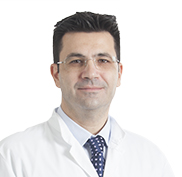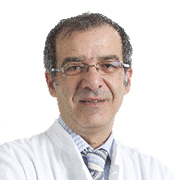- HYGEIA
- Vision & Mission
- Timeline
- Organizational structure
- Press Releases
- Social responsibility
- Awards and Distinctions
- Human Resources
- Scientific & Training activities
- Articles – Publications
- Our Facilities
- Magazines
- Healthcare Programs
- Doctors
- Services
- Medical Divisions & Services
- Imaging Divisions
- Departments
- Units
- Centers of Excellence
- Emergency – Outpatient
- Nursing Service
- Ambulances
- Patients
- Hygeia
- Υπηρεσίες
- Ιατρικά Τμήματα & Υπηρεσίες
Prostate Brachytherapy Center
Prostate Brachytherapy Center is using up-to-date treatment methods to cure all diseases of urogenital tract (of kidney, ureter, urinary bladder, prostate, and remaining genital organs).- Patient evaluation with complete record and storing of his medical history.
- Specific transrectal evaluations and studies, necessary for all diseases of the prostate gland.
- Appropriate staging of cancer, if present, and suggestion of ideal treatment regimen according to international protocols and guidelines.
- Transperineal infusion of antibiotic mixture in prostate and seminal vesicles (in cases of chronic inflammation – prostatitis).
- Transperineal prostate and seminal vesicle biopsy:
- Pioneer method of prostate cancer detection that obtains cores from all regions resulting in a detailed mapping and staging of the disease.
- This method offers the highest accuracy in prostate cancer diagnosis worldwide, and in Greece is performed only at “Hygeia Hospital” since 2008, in collaboration with Ultrasound Department.
- Prostate brachytherapy:
- Pioneer method of prostate cancer treatment facilitated by implanting radioactive sources (“seeds”).
- It is a minimal invasive procedure (blood free) and causes no complications.
- Since 2000, Center performs the latest form of prostate seed implantation called “Real Time” technique, invented at Mount Sinai School of Medicine in New York, from Prof. Nelson Stone and his colleagues. At PBC the first modern form of prostate brachytherapy was performed in Europe (1997).
- Follow up of treated patients.
Πηγή: /en/Services/departments/department/717/-kentro-vraxytherapeias-prostati-.html © hygeia.gr
How is a diagnosis reached?
In the beginning, it is done with a usual digital examination. Afterwards, the Special Prostate Antigen (P.S.A.) is measured, the value of which increases in cancer (but also in other cases, such as in inflammation).
Finally, Intra-rectal Prostate Ultrasonic Tomography (TRUS) provides a complete and accurate image of the prostate, through which we determine whether the internal architecture of the organ, as well as the prostate’s capsule is normal or not.How are the findings confirmed?
By directed biopsy with Intrarectal Ultrasonic Tomograph. Small samples of prostatic tissue are taken with perfect accuracy through the optic image provided by the Ultrasonic Tomograph.What different types of treatment are there?
Prostate Intrarectal Ultrasonic Tomography (TRUS): A technological horizon in the diagnosis of prostate cancer.
The Prostate Intrarectal Ultrasonography allows Urologists to diagnose cancerous tumors at sizes of some millimeters, when, in other words, it is at first and curable stages.During the examination, the whole prostate is observed and its image is recorded on the machine’s screen, offering information on the internal architecture of the prostatic gland, but also of the surrounding periprostatic area.
Prostate physical examination from the rectum may be correlated to the diagnostic image. Suspicious areas detected with the Intrarectal Ultrasonography can be examined. Using the directed biopsy, part of the tissue is taken from the examined area, while the patient does not need to stay in hospital (outpatient).
Also, biopsies taken from specific parts of the prostate are very important for staging the disease.Prostate cancer can be cured if diagnosed at an early stage. How do we choose the most appropriate course of treatment?
It depends on:- The patient’s age
- His general condition and
- The stage of his disease at diagnosis
What is the internal radiation or the intratissue implantation of radioactive material?
Sterotactical brachytherapy or intra-tissue implantation of radioactive material (in the prostate, via the perineum) with precision is a new method: it aims at administering high-dose radiation in the prostate, in order to render every cancer focus dead, at the first stages of the disease, inside the prostate capsule. It is estimated that the administered dose is approximately double of the equivalent external radiation, while surrounding organs remain perfectly safe.However, even with locally advanced prostate cancer, combination therapy (implantation combined with limited external Radiation) offers a good chance of radical treatment.
What material is used?
Iodine (Ι125) or Palladium (Pd103) (in stones the size of half a grain of rice).
Is it dangerous for the human body in general?
It is not at all dangerous.How is implantation carried out?
Implantation is carried out with the help of technologically advanced equipment and perfect precision. The method is executed by a group of specialists (radiotherapists, urologists, radiophysicists), usually with the patient under general sedation and lasts between 60 and 80 minutes. The patient stays in Hospital for 24 hours. Soon, (approximately in five days) he may be fully active again. Radioactive materials are inactivated in a few months and are rendered completely harmless.What are the advantages of the intratissue implantation?
- The rate of disease control is high, especially in the first, but also in localized, advanced stages.
- The risk of extensive and serious operation is avoided.
- Sexual capacity is not influenced.
- The risk of urine incontinence is practically non-existent.
- The patient leaves the hospital on the same or the day after the operation and returns to his normal life.
- No special measures of precaution are required of the patient or his environment.
For how long do the implants remain there and stay active?
They remain inside the prostate permanently. In a few months they are no longer active and they cause no discomfort.
According to international statistics worldwide, prostate cancer is the second most important cause of death in men, following lung cancer.Every man has a 35% – 40% chance to develop the disease after the age of 50. This percentage becomes greater as time goes by. Just think, that at the age of 80, 70-80% of men have prostate cancer.
Given that timely prevention represents the greatest means of efficient treatment, HYGEIA’s Prostate Brachytherapy Center, provides answers to a series of important questions with regards to symptoms, diagnosis, treatment methods and advantages of Brachytherapy in treating the disease.
1. What are the chances for someone to develop prostate cancer?
It’s the type of cancer that most often attacks the male population and it represents the second leading cause of death in men, after lung cancer.2. At what age does it often appear?
Every man of 50 years old or more must know that they are at risk for developing prostate cancer. This incidence increases with age. A family history is also an important factor.3. How can one reduce the risk of developing prostate cancer?
There is no way to do this. What we can do though, is diagnose the condition early enough. Every timely diagnosis is the key to a successful treatment.4. How can a man assist a timely diagnosis?
In two ways: By being informed and by undergoing a prostate check-up every year.5. What are the symptoms of prostate cancer?
In the first stages when the tumor is small, there are no symptoms. When the tumor gets bigger, then the patient will present with:- Frequent urination, especially at night
- Reduction of the radius and thickness of urination
- Difficulty in urinating (intermittent urination, drops)
- Stinging and burning sensation during urination
- Blood in the sperm and urine
- Pain in the bones, if the condition has extended to them
 Contact Us2nd floor
Contact Us2nd floor
Telephone
+30 210 686 7902Medical Team
- Αttending Physicians
-
 Katsochi Despina
Katsochi Despina -
 Skouteris Vasileios
Skouteris Vasileios
- © 2007-2024 HYGEIA S.M.S.A.
- Personal Data Protection Policy
- COOKIES Policy
- Terms of Use
- Privacy Policy
- Credits
- Sitemap
- Made by minoanDesign
Ο ιστότοπoς μας χρησιμοποιεί cookies για να καταστήσει την περιήγηση όσο το δυνατόν πιο λειτουργική και για να συγκεντρώνει στατιστικά στοιχεία σχετικά με τη χρήση της. Αν θέλετε να λάβετε περισσότερες πληροφορίες πατήστε Περισσότερα ή για να αρνηθείτε να παράσχετε τη συγκατάθεσή σας για τα cookies, πατήστε Άρνηση. Συνεχίζοντας την περιήγηση σε αυτόν τον ιστότοπο, αποδέχεστε τα cookies μας.
Αποδοχή όλων Άρνηση όλων ΡυθμίσειςCookies ManagerΡυθμίσεις Cookies
Ο ιστότοπoς μας χρησιμοποιεί cookies για να καταστήσει την περιήγηση όσο το δυνατόν πιο λειτουργική και για να συγκεντρώνει στατιστικά στοιχεία σχετικά με τη χρήση της. Αν θέλετε να λάβετε περισσότερες πληροφορίες πατήστε Περισσότερα ή για να αρνηθείτε να παράσχετε τη συγκατάθεσή σας για τα cookies, πατήστε Άρνηση. Συνεχίζοντας την περιήγηση σε αυτόν τον ιστότοπο, αποδέχεστε τα cookies μας.






































